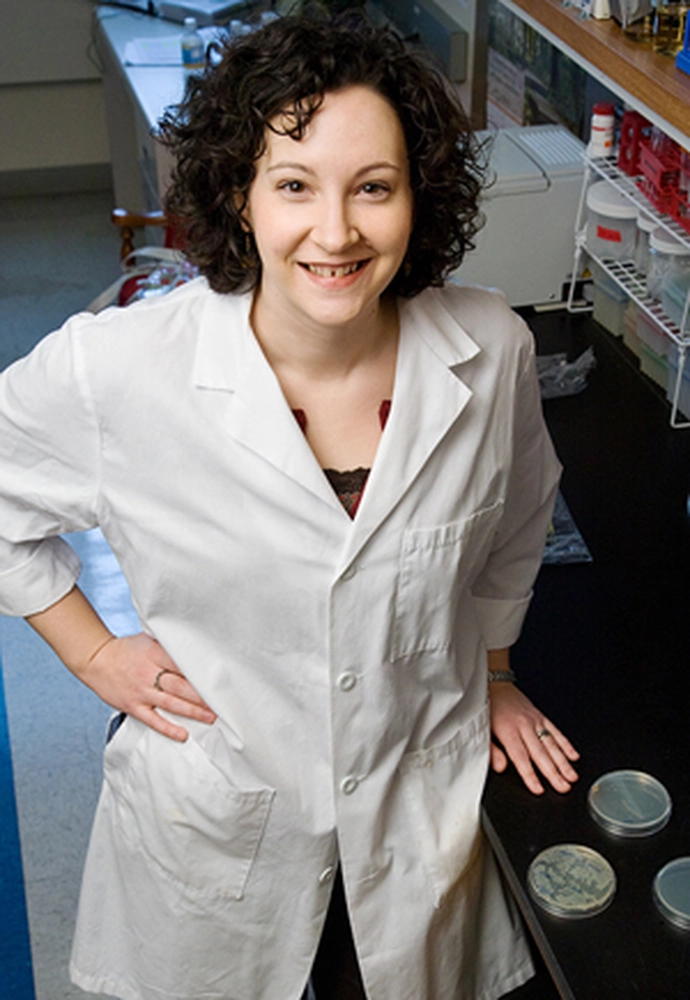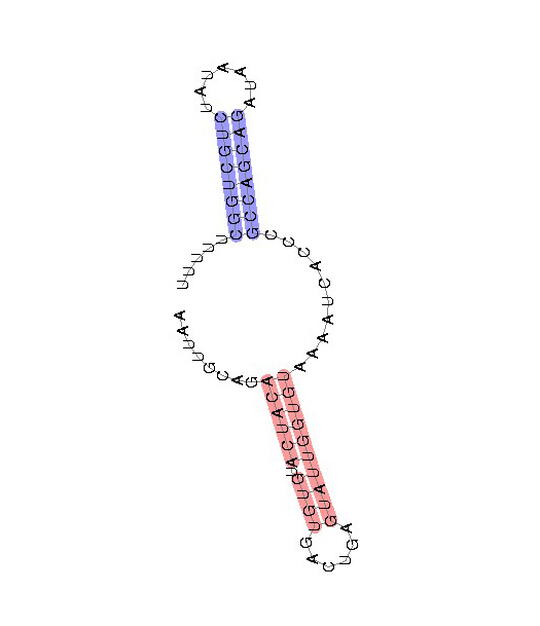
Assistant Professor of Microbiology, Carin Vanderpool,never predicted she would be in the position she is today.
After only two years at the University of Illinois she has created a lab from the ground up, been published in the Proceedings of the National Academy of Sciences, and made great strides with small RNAs—a newly developing area of research in cellular regulation.
As a successful new faculty member, Vanderpool seems to have chosen her career wisely, but she wasn’t always sure that academia was the right path.
“I’ve always been more interested in natural sciences or biological sciences than physical sciences, even in high school,” Vanderpool said.
“I took a physics class that I didn’t really like at all, and a biology class that I really did like.”
Her interest in biology brought her to Purdue University. Other scientific fields like chemistry competed for her interest as an undergraduate student, but she ultimately decided biology was her calling. “I took a microbiology course when I was a junior in college and really loved it,” she recalls.
Most of the introductory courses Vanderpool took focused on the cells of complex multicellular organisms, like humans. She found the material interesting, but the simpler yet intricate bacterial systems she studied in microbiology captivated her.
A bacterial cell has to turn some of its genes on and off in response to changing environmental conditions, such as colder temperatures. In contrast, a multicellular organism may have fur or can migrate long distances to adapt to a change in their environment. Bacterial cells lack those luxuries.
“It was fascinating to me that in a much simpler system, a single-celled organism does basically the same essential life processes that a much more complex cell does,” Vanderpool said.
“They have all these elegant ways of regulating their genes to respond to really diverse environmental changes that a multicellular organism is shielded from by virtue of having all of those cells cooperating to make a larger organism.”
After Vanderpool found her passion for the subject, she was able to conduct research in the lab of her microbiology course professor.
“He had a project trying to create these bioreactors using microorganisms to break down waste products. It was a project for the Navy, so they were trying to remediate what they called ‘grey water,’ which is what goes down their sinks and their showers.”
Although she enjoyed her time in the lab, she still wanted to consider all options for her future, not just research. “I applied for a few jobs my senior year,” she said, although many job options available at the time did not interest her. “I knew I didn’t want to be a sales representative for a drug company or anything like that.”
Vanderpool faced the difficult decision familiar to most undergraduates. Job hunting can be tough without work experience, and graduate school is not for everyone. “I started thinking about what I did want to do—continuing on in research.”
Vanderpool decided to further her education at the University of Minnesota, and hoped to research something more medically relevant. The University of Minnesota offered a variety of research labs which allowed Vanderpool to find something she was interested in.
“It wasn’t just a single department you were going into, it was multiple departments that had gathered together to make a larger graduate program,” she explained. “Once I started grad school I quickly saw it was the right decision.”
Vanderpool’s Ph.D. work focused on the bacterium Bordetella pertussis, which is responsible for whooping cough. This research found the balance between microbiology and medical relevance she was looking for. “The lab I was in was interested in how bacteria acquire iron in the environment, especially bacterial pathogens like Bordetella.”
Iron is essential for life, and many bacterial species have the ability to actively acquire iron from their environment. A human pathogen like Bordetella attempts to acquire iron from the host’s heme or hemoglobin, a compound typically used by the host to deliver oxygen throughout the body. If Bordetella can utilize the iron that is naturally found in the host, it may have a better chance at survival and infection.
“The Bordetella genome had been sequenced…so we identified a gene cluster that we thought was a good candidate for a heme utilization system. My Ph.D. work essentially involved characterizing the function of those genes and how they were regulated,” Vanderpool said. At the same time, a new area of research caught her attention.
“I knew of this new field that was coming into existence at that time—figuring out how small RNA molecules regulate gene expression, and I thought it was really cool. I was interested in regulation from my Ph.D. work and this was a brand new mechanism of regulation.”

Small RNA (small ribonucleic acids) have been overlooked and understudied for decades, in part because of their small size. The first small RNA was discovered by chance, and others proved to be difficult to identify and isolate for further research.
The function of these short RNA sequences was mysterious. The traditional function of RNA is to provide the blueprint for a unique protein. It appeared, however, that the cell did not use small RNAs to make any useful proteins. Small RNA remained an outcast in the molecular popularity contest for decades, but now researchers like Vanderpool have begun describing the important roles of small RNA.
After receiving her Ph.D. for her work on Bordetella, Vanderpool went to the National Cancer Institute to begin her work in this novel area of research. “They had identified a list of small RNAs, but they didn’t know what hardly any of them did.” Vanderpool said. “When I first started, I was working on three or four of these, taking a few different approaches to try and figure out what they might be doing.”
Vanderpool was part of a lab that was pioneering small RNA characterization. “My post-doc advisor, Susan Gottesman, was the leading person in that field at the time—really she still is,” Vanderpool said.
Vanderpool was able to bring her research from the National Cancer Institute with her when she joined the University of Illinois faculty in 2006. Since then, her research has been published in the Proceedings of the National Academy of Sciences, and describes the novel function of the small RNA named Sgrs in sugar stress.
Bacteria use a sugar transporter to transport glucose inside their cells to use for energy. Too much glucose, however, and the cell will be overloaded. In order to respond to the stress of excess glucose, the Vanderpool lab found Sgrs performs two functions to prevent the transport of glucose into the cell.
One section of Sgrs codes for a protein that prevents the cell’s current sugar transporters from bringing in more glucose. A second section of Sgrs prevents the cell from producing new glucose transporters. The discovery was unique because Sgrs preformed two functions to respond to the same cellular stress, including protein production. This bi-functionality exemplifies how small RNAs can play important roles in cell survival.
Vanderpool’s short time in the School of Molecular and Cellular Biology has been efficient and productive for such a new faculty member. Within two years Vanderpool had turned an empty lab into a fruitful environment producing great research. Her lab now includes two graduate students who are close to writing their first manuscripts. Vanderpool taught Microbial Physiology for a year and enjoys teaching and having discussions with her students.
She also enjoys working in the lab with her graduate students, even though organizing a professor’s responsibilities is not always easy. “I don’t get to do as much hands-on bench work as I used to do, especially when I’m teaching, but I still do some and that’s a lot of fun for me,” she said.
Like many students and researchers, Vanderpool’s path was never clearly defined. “[8 years ago] I was in the throes of my graduate studies and not sure where I would go next,” she said. Vanderpool’s recent transition from student to professor gives her a unique perspective on her career.
“A lot of students see their advisors really busy and really stressed out, and I think sometimes we don’t do a very good job of showing our students that this is actually fun, that were doing this because it’s enjoyable, and we can’t imagine ourselves doing anything else. I think I try to show that to my students, and I guess I would say that would be my advice for students in general—to not shy away from something because you think it looks hard,” Vanderpool remarked.
“I wouldn’t change anything. If I had to go back I would do the same things again.”